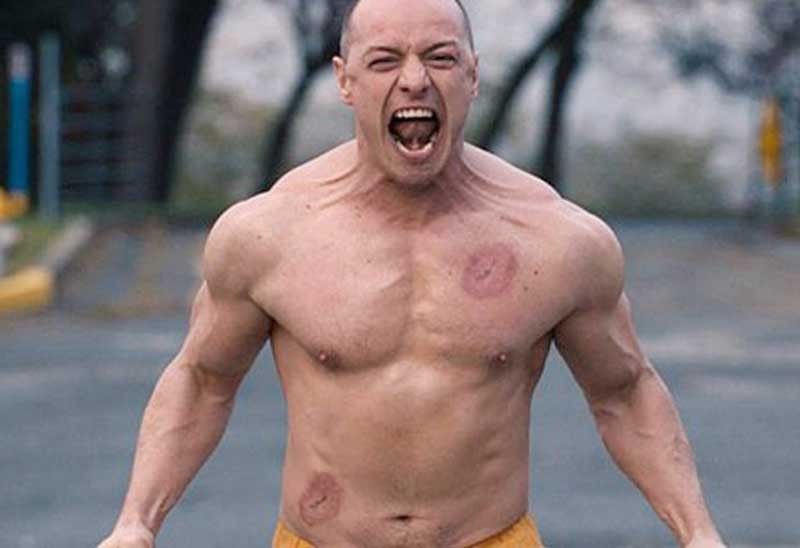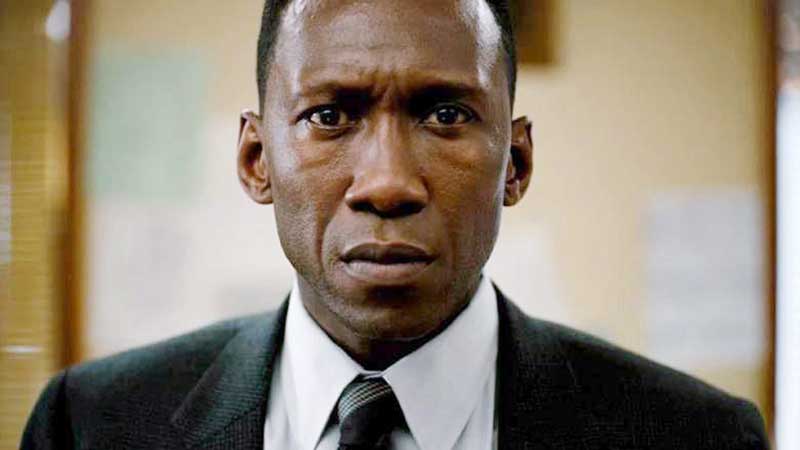Superheroes, nannies and detectives (Oh, my!)

In M. Night Shyamalan’s 2016 out-of-the-blue hit Split, James McAvoy played a character with 23 separate personalities. Suffering from DID (Dissociative Identity Disorder), his more evil-inclined personalities took to abducting teenage girls, hiding them in the bowels of the Philadelphia Zoo as a “gift” to the leader of his motley crew of voices known as The Horde.
That leader was The Beast, and when McAvoy turns into The Beast, Glass — Shyamalan’s final installment in a superhero trilogy that began with his 2000 film, Unbreakable — lives up to its billing. Here, McAvoy — shifting like a broken remote control between his main personality, Kevin Wendell Crumb, and more unsavory voices such as Barry (who abducts the girls), Patricia (who organizes things) and Hedwig (a hyper nine-year-old who helps The Horde) — brings to the table all that CGI fails to summon in a typical D.C. superhero movie. That he’s squared off early on against an equally powerful David Dunn (Bruce Willis), the man who emerged from the Eastrail 177 train disaster with superhuman strength, makes this a kind of Frankenstein Meets The Wolfman or King Kong Vs. Godzilla grudge match. Brought under the watchful eye of Dr. Ellie Staple (Sarah Paulson) at a local mental institute, she seeks to convince Kevin, Dunn and the now-catatonic Elijah Price (Samuel Jackson, reprising his role as “Mr. Glass”) that they’re not superheroes after all, but just need some drastic laser surgery on their hyperactive prefrontal lobes.
Glass gets interesting when the superhumans start to flex, less so when they sit around and plot their escape. Jackson is oddly muted for nearly an hour into the movie; wheelchair-bound, his bones are fatally brittle, though his intellect remains superior. It takes a long time before the famous Jackson voice is unleashed.
Three outsiders seek to protect these superheroes from a world that wants to eliminate them (shades of X-Men), and it’s a hoot to see Dunn’s grownup son (Spencer Treat Clark), the plucky abductee from Split (Anya Taylor-Joy) and Elijah’s mom (Charlayne Woodward) all rooting for them. On display are Shyamalan’s signature moves — tricksy camera shots, like the one reflecting off Elijah’s eyeball, and of course a random directorial cameo. But there’s something simultaneously rushed and plodding about Glass — it could have used better pacing to make it a fitting end to the Eastrail 177 Trilogy. Or is it really the end?
Does new ‘Mary Poppins’ spark joy?

Emily Blunt in Mary Poppins Returns.
Watching the opening scenes of Mary Poppins Returns, and spying the immense clutter that occupies the Banks home (where Michael Banks, the kid from the previous Mary Poppins, now a grown-up widower, lives in 1930s London with his sister and three kids), you can’t help wishing that Emily Blunt, floating down from the skies on a kite string this time, might do a little Marie Kondo magic on the premises.
Scatterbrained artist dad Michael (Ben Whishaw) leaves piles of junk everywhere; the kids and sister are constantly stumbling over debris, and the neighbors fire off a cannon every day at 5:05 p.m., which causes more detritus to pile up. Where’s the sensible person who will look at this place and ask, “Does it spark joy? If not, get rid of it!”
Mary Poppins used to be that gal. She’d just wave her hand and the Banks’ kids room would clean itself. Would that some such magic had been invested in this Disney sequel which, despite the good intentions of Emily Blunt and the positive vibes of cockney lamplighter Jack (Lin-Manuel Miranda), never really takes off. The plot is silly and threadbare. Not a single tune by Marc Shaiman will stick in your head the way, say, Supercalifragilisticexpialidocious did. True, many of the visual set pieces — a vaudeville club on the surface of a china vase, the upside down pawn shop of Meryl Streep, spouting an over-the-top Russian accent — are striking. Dick Van Dyke adds some unexpected life (and a bit of spry tap-dancing) towards the end. And there is an underlying social message about people in power hiding their true intentions behind genial masks (such as obvious villain/bank manager Colin Firth), but there are also anachronisms — such as those BMX bikers in 1930s London! — that pull you out of the proceedings. Emily Mortimer simply stands around supportively, trying to do as little damage as possible. Where’s Marie Kondo when you need her?
‘True detective’s dark mysteries

Mahershala Ali inTrue Detective 3.
Mahershala Ali is everywhere these days. After a standout performance in Moonlight, he’s playing an uptight black jazz pianist driven around by white bigot Viggo Mortensen in Peter Farrelly’s Green Book; and over on HBO, he’s the glowing ember at the center of the third edition of True Detective.
Returning to the three-decade narrative span that marked season one, after a less-assured season two took on the sprawling corruption of Los Angeles, True Detective now places us in the Ozarks of Arkansas, where two kids go missing and a community goes to pieces. Ali plays Detective Wayne Hays, a Vietnam vet who was a LRRP (long-range reconnaissance patrolman), skilled at tracking things on his own; his partner is less-cerebral Detective Roland West (Brad Dorff), drawn into a murder case that goes away for 10 years, then comes back to haunt them every decade or so. That’s the way it is in creator Nic Pizzolatto’s world: the past is never dead; it’s not even past. While Season 2’s Rachel McAdams and Colin Farrell tried gamely to reinvent True Detective with new layers of grime and grit, there was less mystery. Season 3 promises more mystery, which is why we watch detective stuff in the first place, plus little literary clues to keep fanboys and TV geeks tapping away on their webspace. While I only dimly remember all the “Time is a flat circle” theorizing of Matthew McConaughey in True Detective 1, I do recall that the many roads and pathways led to a pretty solid resolution. Moreover, the odd coupling of Ali and Dorff promises some of the prickly tension that McConaughey and partner Woody Harrelson had in the first season.
By Episode 2, detectives Hays and West have started to pick away at the threads of the case, which will no doubt reveal more racism, more institutional corruption, and more dark mysteries of the human heart. It may not all add up to more than a flat circle. But for now, we are hooked.















